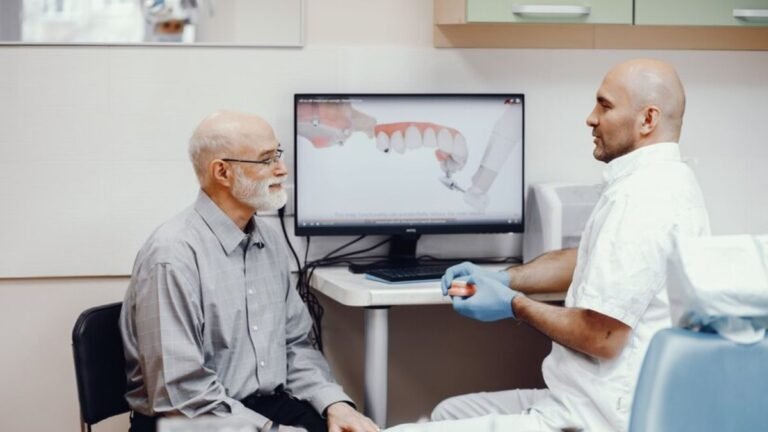Introduction
Dental health is crucial to overall well-being, yet it often gets sidestepped due to cost concerns. Government dental plans offer a solution by providing affordable access to essential dental services. These plans, part of various health initiatives, aim to ensure that everyone—regardless of age or income—can maintain a healthy smile. Whether you are a parent looking for coverage for your child, a senior seeking dental care, or a family needing budget-friendly options, understanding government dental plans can make a significant difference. These plans typically cover routine check-ups, cleanings, and essential treatments, helping to prevent severe issues before they arise. By reducing out-of-pocket expenses, government dental plans allow individuals to prioritize their dental health without compromising other essential needs. Additionally, they offer peace of mind, knowing that accessible dental care is available when needed most, fostering a healthier community overall.
Understanding Government Dental Plans
Government dental plans are designed to meet the oral health needs of different populations, including children, seniors, and low-income individuals. These plans cover a variety of services such as routine check-ups, cleanings, fillings, and sometimes even more comprehensive procedures. Government dental plans offer peace of mind and financial relief for those enrolled, ensuring that maintaining dental health doesn’t have to break the bank. Many plans also emphasize preventive care, encouraging regular visits that help avoid costly, invasive procedures. These plans can significantly benefit children and seniors by providing early intervention and treatments promoting long-term oral health. By making essential services more accessible, government dental plans play a vital role in reducing health disparities and fostering better health outcomes.
What Services Are Typically Covered?
Most government dental plans focus on preventive care and essential treatments, which are crucial in maintaining oral health and preventing more severe conditions. Coverage typically includes:
- Preventive Care: Services like routine exams, cleanings, fluoride treatments, and sealants.
- Therapeutic Services: Basic procedures such as fillings, extractions, and root canals.
- Diagnostic Services: Routine X-rays to identify potential problems early on.
- Emergency Services: Immediate care for unexpected dental emergencies to alleviate pain and prevent further damage.
It’s essential to review the specific details of the government dental plan you or your family are considering, as coverage can vary based on the program and location.
Who Is Eligible?
Eligibility for government dental plans often depends on factors such as age, income level, and specific needs. Generally, these programs are geared towards:
- Children and Adolescents: Programs like Medicaid often offer extensive pediatric dental coverage to ensure children receive necessary dental care during their developmental years.
- Low-Income Families: Assistance programs are typically available for families below a certain income threshold, providing essential dental services at reduced or no cost.
- Seniors: Older adults may find specific government programs that cater to their unique dental needs, such as dentures or oral surgery services.
Individuals can ascertain the best dental plan by checking eligibility criteria and contacting local health departments.
How to Enroll in a Government Dental Plan
Enrollment processes for government dental plans vary depending on the program. However, some general steps can guide you:
- Determine Eligibility: Begin by assessing whether you meet the plan’s income, age, or situational criteria.
- Gather Necessary Documentation: Have identification, income verification, and other required documentation ready.
- Submit an Application: Applications can often be completed online, in person at health departments, or by mail.
- Wait for Confirmation: Once submitted, you’ll typically receive a notification about your enrollment status.
Enrollments are typically open year-round, but signing up as early as possible will allow you to take advantage of the benefits sooner.
Maximizing Your Dental Plan Benefits
Being proactive about oral health is vital to making the most of government dental plans. Here are some ways to maximize benefits:
- Routine Appointments: Schedule regular dental visits and screenings to maintain oral health and catch potential issues early.
- Utilize Covered Services: Fully utilize the preventive services covered under your plan, such as cleanings and fluoride treatments.
- Know Your Plan: Familiarize yourself with what is covered, any limitations, and applicable co-pays, if any.
If you and your family are aware of and take advantage of your plan’s benefits, you and your family will have the best possible dental health.
Conclusion
Government dental plans promote oral health and make dental care accessible across various communities. By knowing what is covered and how to use these services efficiently, people can lower their risk of dental diseases and maintain better oral hygiene. As these programs reduce financial barriers, more people will benefit from a healthy smile and an enhanced quality of life. Knowing your dental plan options is the first step to a better future and a healthier smile. For families, seniors, and individuals on a budget, government dental plans can make a significant difference in accessing quality care without the high costs often associated with dental services. These plans encourage preventive measures like regular cleanings and exams, crucial to catching issues early and avoiding complex, expensive procedures later on. In addition, many plans guide proper oral care practices, helping individuals build daily habits that protect their teeth and gums. By reducing the financial burden, these programs enable individuals to maintain their oral health with fewer worries proactively. Embracing the advantages of government dental plans means investing in one’s overall health, as good oral health is closely linked to a healthier heart, immune system, and overall well-being.

